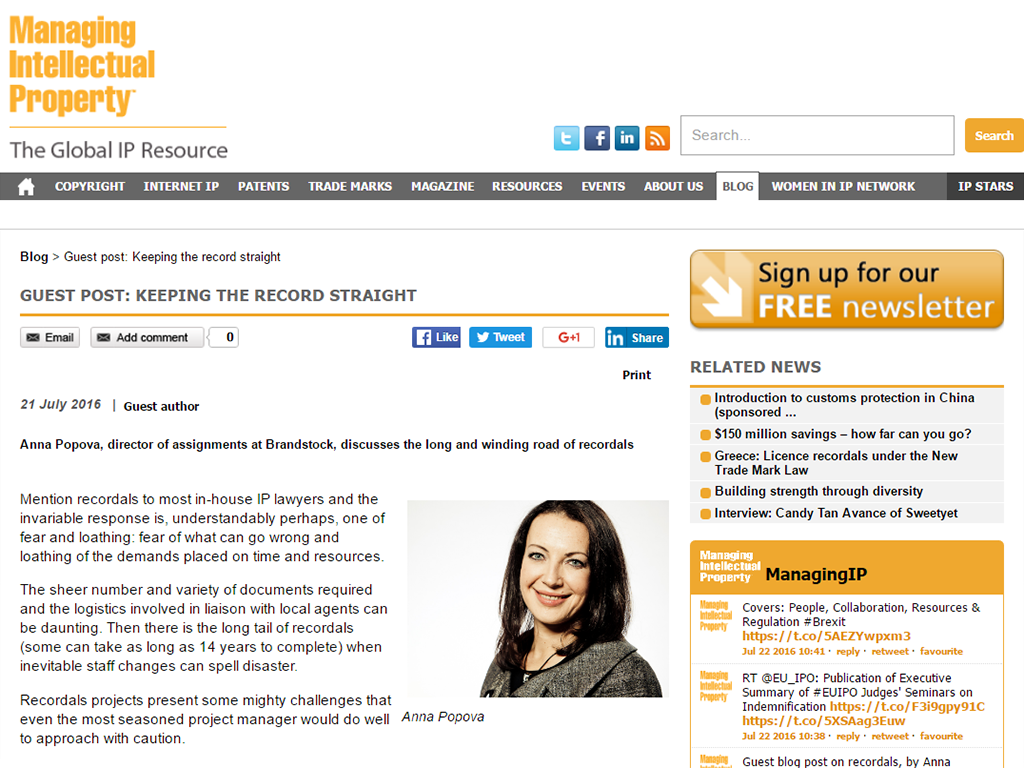Different strategy approaches are key for protecting intellectual property
There are many different approaches to protecting your intellectual property. It’s important to pick the right path, since what works for one business may not be appropriate for another.
In all cases however, a strong strategy for protecting intellectual property starts with being proactive. If you can identify risk and threats early on in the process, you’ll be better-placed to deal with potential problems. For many companies, that will entail an initial audit of your IP assets. What are they? Are they up to date? Are they all necessary to your business? And are you covered in the countries you need to be covered in?
Relying on experts can be the best solution for your brand:
Get 15% OFF your IP recordal project!
Specific problems you might encounter include:
Assets in the wrong name
Especially if your company has been through a merger or acquisition, it’s possible that ownership information for your IP assets may be out of date. This can create problems if, for example, you face an opposition or are involved in litigation. Identifying these weak spots and dealing with them should be part of a wider recordals and assignments project.
Intellectual Property assets Over-payment
When was the last time you assessed what you are paying to maintain your IP assets? For companies who use international agent networks to manage renewals in multiple jurisdictions, it’s vital to clearly understand how the official fees and agent fees are charged in each jurisdiction. Brandstock’s agent benchmarking service has been used by companies to secure substantial savings on international agent spend in the past, including identifying situations where clients were overpaying even for official fees.
Useless inventory
Some companies have substantial intellectual property assets that are ineffective. For example, trademarks that are no longer in use, or patents that are not being worked, licensed, or even forming part of a defensive portfolio. Identifying such assets should be part of a strategy for protecting intellectual property, since it may be possible to monetize some of the assets through license or sale, and even if that is not possible, you are likely to be able to save time and resources by letting useless assets lapse if you no longer need them.
Planning for the future
Strategies for protecting your intellectual property should be forward looking too. Of course, it’s important to ensure that your existing assets are up to date and secure. But most businesses will be developing new assets as they grow; having a good strategy for those assets is vital.
In practice, that requires several different things to happen. If you’re developing a new brand for example, and want to secure trademarks to protect it, you’ll need to identify your key target markets, both those in which you want to sell substantial quantities of the product in question and those where you want to protect the trademark even though it might not be part of your key target markets. Depending on the specific product, you may need extensive global coverage; but for some types of product, it might be enough just to protect your trademark in major business hubs, or even just in your home jurisdiction. It depends on the overall strategy for the trademark and its associated product or service.
Whatever you decide to do, performing a deep trademark search will be key – at Brandstock, we help companies with our unique Deep Screening solution, using data and legal analysis to provide a fast, accurate assessment of the risk to your company of a particular mark in specific jurisdictions.
This can be coupled with work on name creation, using data and market experience to ensure the name you choose is clear to use, but also that it works across jurisdictions. There are famous examples of companies that have chosen trademarks which work well in English-speaking countries, but perhaps have more negative connotations in other countries. Making sure that you anticipate these issues in your name creation strategy is key to protecting your intellectual property effectively.
Finally, any intellectual property protection strategy needs to have an eye on costs. You might consider engaging an external consultant to manage all the downstream demands of IP initiatives. This relieves pressure on in-house resources, avoids a sometimes awkward mixture of in-house work and external consultation, and gives you peace of mind that your assets are in safe hands. Brandstock can provide a comprehensive downstream service to ensure that your IP protection strategy not only works, but works at a price that suits you.



































